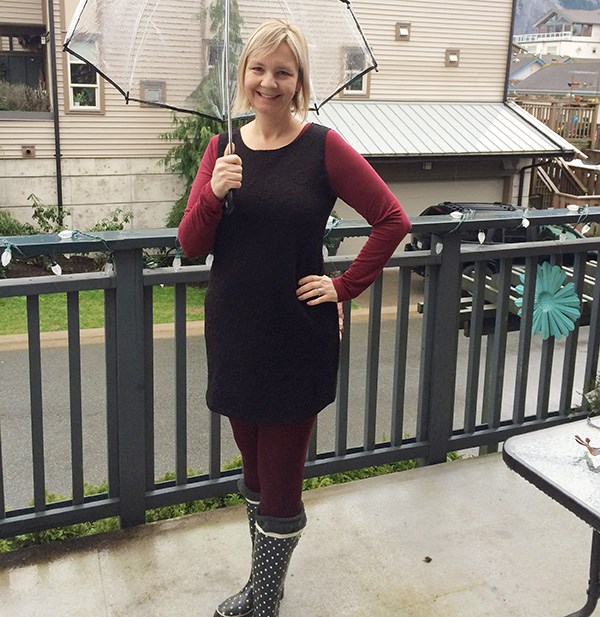Twenty-nine days have passed since I started my 90-day challenge to wear the same black dress.
The challenge’s aim, among other things, is to raise awareness of fashion consumerism.
So far, so good: I am not completely sick of the dress yet.
If people notice I’m always in the same dress, they don’t often mention it.
Mayor Patricia Heintzman told me she hadn’t noticed, even after seeing me 10 times – I do try to mix up my accessories to look fresh.
I’ve also come to believe that if a metal robot with a blonde wig were to take over as mom, my four boys would likely not blink an eye. Not one has mentioned the homogeneous nature of my attire.
My husband works opposite shifts to me, which means sometimes we go several days without seeing each other. He says now he can’t whisper into the phone, like they do in romantic movies, “Baby, what are you wearing?” because, well, he knows darn well what I am wearing. But he has never actually asked any such thing over the phone so, no loss there.
The goal of saving money isn’t going so well. Thus far, I’ve spent as much on accessories as I did on cheap outfits, but every accessory has been purchased at a local thrift store, so that ought to count for something.
The challenge has made me think more about what my clothing is made from. My made-in-China, bought-in-Squamish dress is 65 per cent viscose, a semi-synthetic fiber derived – as far as I can figure from my research – from wood pulp dissolved in caustic soda. The other 30 per cent of the dress is nylon, i.e. plastic threads. A dress made of cotton, hemp, wool or bamboo would have been better because they are more natural, renewable and biodegradable.
I have discovered whatever the fabric, clothes production has a negative environmental impact, another reason why having longer-lasting items makes sense over the long run.
Project 333 is a more permanent clothing challenge worth considering. The initiative involves a wardrobe of 33 items or fewer. Die-hards gather up their unused clothes and donate them.
Sign me up, when I finish this challenge on May 14.
If you want to see the dress follow me on Instagram: @thuncher.



